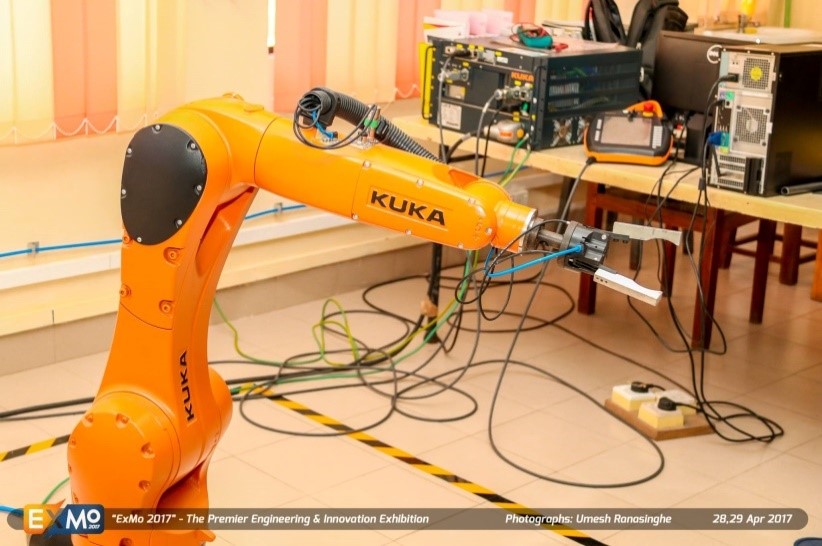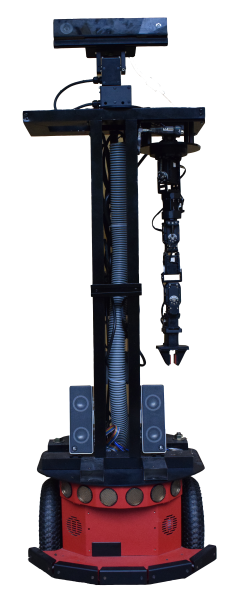Industrial Robotics

Industrial robots are supportive in manufacturing processes in factories. Vast amount of applications can be obtained as welding, painting, assembly, pick and place for printed circuit boards, packaging and labeling, palletizing, product inspection, and testing which accomplished with high endurance, speed, and precision. They can be programmed to perform dangerous, repetitive tasks with consistent precision and accuracy, industrial robots are progressively used in a variety of industries. There are wide range of models are available which consists of reach distance, payload capacity and the number of axes of travel of their jointed arm. A robot utilizes an end effector in both production and handling applications to hold and manipulate either the tool performing the process, or the piece upon which a process is being performed.
Disaster Management Robotics
Now-a-days natural disasters occur in the world very often and represent an important factor that affects human life and development. There are various types of natural disasters, such as geophysical (tsunami, landslide, earthquake, volcano, avalanche), hydrological (floods, debris flow), climatological (drought, wildfire, extreme temperature) and meteorological (tropical storm, hurricane, sandstorm, heavy rainfall), have caused losses of many lives in addition to increase in material losses. This affects for both developed and developing countries. The humans should be capable of react this kind of natural disasters. At present, efforts are being done in order to recognize and forecast the possibility that a disaster will happen, to react in an efficient manner to the disaster in course of happening, and to quickly and efficiently assess the damage, fix and restore normal state. Unmanned aerial vehicles (UAVs) equipped with remote sensing instrumentation offer numerous opportunities in disaster related situations. There are some of research studies regarding different applications of UAV-assisted disaster management systems, and open issues. In Sri Lanka also natural disasters happen time to time. The research studies related to disaster management will be beneficial for withstanding for that kind of situations.
Assistive Robots

Globalization enhances the living standards of the people unexpectedly. Besides, it adds the complexity to the human lives. The effort of the young workforce should be utilized in an effective manner to procure an optimized output. In this case the assistive robots play a vital role with the aid of artificial intelligence by adhering to the AI techniques which are improved by human behaviors.
Moreover, the growth of the elderly population has been increased dramatically. Further it is essential to be succoured by a human friendly robot in order to care the elderly people in the domestic environments. Moreover the robots with such capabilities will assist the aged people to perform their day to day tasks by saving the energy of young workforce. In consideration to the above mentioned present scenarios, the social robots are predominant machineries to the modern millennium. Robotic assistive devices are used increasingly to improve the independence and quality of life of persons with disabilities. Devices as varied as robotic feeders, smart-powered wheelchairs, independent mobile robots, and socially assistive robots are becoming more clinically relevant. There is a growing importance for the rehabilitation professional to be aware of available systems and ongoing research efforts. As a developing country it will be beneficial to conduct researches to contribute the field of assistive robotics in order to improve technological aspects of Sri Lanka.
Agricultural Robotics

Sri Lanka is a developing country and it is mainly based on agriculture. Different kinds of cultivations are seen in different kind of districts in Sri Lanka. Agricultural production connected with live produce fruit, vegetables, grains and flowers which are highly sensitive to environmental and physical conditions such as temperature, humidity, gas, pressure, abrasion and acceleration. Cultivation process is a complex, diverse, labor concentrated and usually unique to each crop and process type and components are affected by many factors, including crop characteristics and requirements, the geographical/ geometric/ geological environment, the climatic and meteorological conditions, market demand and consumer preferences, and the farmer's capabilities and means. Labor is a main limiting factor in the development of agricultural industries in both developed and developing countries such as Sri Lanka. Furthermore, manual work can cause musculoskeletal disorder risks and chronic health issues to workers. Agricultural robots can be introduced as solutions for the above concerns.
